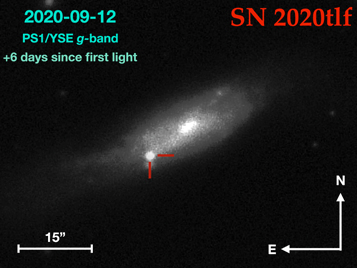Webb telescope spots its first star—and takes a selfie
Tiny new planet discovered around Sun’s nearest neighbor
Astronomers find largest radio galaxy ever
NASA reveals stunning first image of glowing clouds surrounding an exploding star
Astronomers discover new type of star with puzzling origins
Bizarre radio signal repeating every 18 minutes discovered in Milky Way
First-ever “rogue” black hole discovered zipping through the galaxy
First quadruple asteroid system detected
Scientists discover how galaxies can exist without dark matter
Future gravitational wave detector in space could uncover secrets of the universe
We Think We’ve Spotted the Mysterious Birth of a Black Hole
NASA IXPE Observatory’s First Stunning Image: The Glowing Remains of an Exploded Star
Scientists Unveil Largest and Most Accurate Virtual Representation of the Universe
Astronomers Think They’ve Just Detected an “Invisible” Black Hole
HERA Telescope: Early Findings Promise Deeper Understanding of the Cosmic Dawn
Is the “Fine-Tuned Universe” an Illusion? Challenging Popular Arguments for a Multiverse
Astronomers Watch a Star Die and Then Explode as a Supernova – For the Very First Time
An Expanse of Light – Dazzling New Multiwavelength Images of the Universe From NASA
Resolving the gravitational redshift across a millimetre-scale atomic sample
Hubble Observes Triple Galaxy Merger: IC 2431
Universe is Teeming with Quintillions of Stellar-Mass Black Holes
Anatomy of Milky Way’s Star Creation -Occurs in Skeletal Light-Years-Long Filaments
Dark-Matter Asteroids – “Trillions of Trillions May Exist in the Milky Way”
The Eerie Implications of the Multiverse
“Unsolved Mystery ” -Strange Particle from Deep Space Detected at Antarctica’s South Pole
German Shepherd almost killed as METEOR smashes through dog house: ‘Barely missed him’
> NASA reveals stunning first image of glowing clouds surrounding an exploding star
The real news is the success of “A new pair of X-ray eyes on the universe is allowing us to see extreme objects like never before.
Just over two months after launching to space, NASA’s newest explorer – the Imaging X-Ray Polarimetry Explorer, or IXPE – shared its very first images. And they are stunning.”
I saw the image and immediately thought “That looks like Cassiopeia A”
Guess what. It is Cassiopeia A.
Prettier picture, though. Back in 1994 it used to look like this.
> Astronomers discover new type of star with puzzling origin
“But now, astronomers have discovered two white dwarfs that don’t quite fit the usual description. White dwarfs have atmospheres dominated by hydrogen or helium, but these new ones have surprisingly high amounts of carbon and oxygen in their atmospheres – rather than the usual trace amounts if anything, the team detected concentrations of both elements that were as high as 20 percent.”
Carbon and oxygen in the atmospheres of white dwarf stars are not very unusual. Well, not extremely unusual. Most white dwarfs are classified as DA with hydrogen atmosphere or DB with helium atmosphere. But about 0.1% are DQ white dwarfs with an atmosphere dominated by carbon. So what’s new about these, if anything?
“These aren’t the only perplexing white dwarfs out there. Other recent studies have found white dwarfs with ring systems, white dwarf pulsars, and a particularly bizarre one that’s somehow burning bright in infrared but not visible light.”
Yes, IIRC, the Kepler telescope spotted a white dwarf with a ring system.
White dwarfs that pulsate occur because the white dwarfs band on the H-R diagram chess the variable stars band on the same diagram. Those that overlap are known as DAV dwarfs or ZZ Ceti, stars.
Yes, there are cool white dwarfs, some shine red like red dwarfs and some are even cooler appearing similar to brown dwarfs. I’ve never understood the age of these ultra-cool brown dwarfs, on the standard model of stellar evolution they would be older than the universe, but clearly I’ve missed something important.
> Bizarre radio signal repeating every 18 minutes discovered in Milky Way
“Deepening the mystery, the object doesn’t just do this constantly – it went through an active period in January 2018, took most of February off, then turned back on for most of March. During each of those 30-day active periods it stuck to its strict schedule, but it didn’t appear in the data in the five years prior or the four years since.”
My first guess would be a slow pulsar.
“On rare occasions, it’s possible for a neutron star to be both a pulsar and a magnetar, and since this new object has characteristics of both, that’s a possibility. But there’s one major problem – it spins way too slowly. Pulsars spin on the order of milliseconds to a few seconds, while magnetars can rotate as slowly as once every 10 seconds. This new signal’s 18-minute rotation is far too long to neatly fit into the box. … The thing is, if you do all of the mathematics you find that they shouldn’t have enough power to produce these kind of radio waves every 20 minutes. It just shouldn’t be possible, they should be quiet.
Interesting


